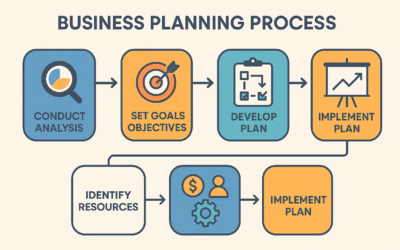Data analytics is very important if you want to build a successful. It can help an enterprise in different ways, such as customizing promotional messages for a particular client and identifying and minimizing business risks. Let’s look at the top five benefits of using data analytics.
1. Make the user experience more customized
Firms obtain customer information from several avenues, including social media, conventional retail, and online shopping. Firms can use data analytics to create extensive customer personas and know about user behavior to provide a unique experience.
Consider a retail clothes company with both a physical and online presence. The business might combine information from its online social media platforms with information about its sales to assess both sets of data and then develop targeted social media marketing campaigns to boost sales of products with categories that clients are already familiar with.
Businesses can use customer data to perform behavioral analytics algorithms and improve the user experience. For instance, a company could use transaction data to construct a predictive model to identify products to promote at checkout and boost sales.
2. Informs decisions made by businesses
Businesses can employ data analytics to inform decision-making and reduce expenses. Prescriptive analytics can propose how the firm should respond to these changes, while predictive analytics predicts what might happen due to these changes.
A company, for example, can simulate changes to price or product offers to ascertain how such changes will impact client demand. To confirm the conclusions drawn from such models, modifications to product offers can be A/B tested. Business analysts like Global Resources could use data analytics software to evaluate the effectiveness of the modifications and display the outcomes after gathering sales information on the modified products.
This will assist decision-makers in deciding whether to apply the changes throughout the company.
3. Streamline the process
Businesses can boost service quality with the aid of data analytics. The distribution chain’s data can be collected and analyzed to determine emerging threats better and identify the cause of production problems or limits.
If a demand prediction shows that this vendor can’t handle the volume needed for the holiday season, an agency may supplement or replace them. Production snags would be avoided in this way.
Additionally, many companies have trouble maximizing their inventories, especially those in the retail industry. Based on elements like holidays, seasonality, and popular trends, data analytics can assist in determining the best distribution for all a company’s current products.
4. Limit risk and cope with failures
Risks abound in the business environment, including those related to worker safety, legal obligations, unclaimed receivables, and employee or consumer theft.
Data analytics can help firms better assess risks and implement preventative measures. For example, a store chain often uses a tendency model to determine which businesses are more susceptible to theft.
A statistical instrument that predicts performance or events is called a propensity or tendency model. The business may use these results to analyze the level of protection needed at the shop or if it should leave a specific area.
Similarly, companies may use data analytics to cut losses after a setback. If data analytics increases an item’s demand, a corporation can decide on the optimal warehouse sale pricing to eliminate extra inventory. An organization might develop statistical models that automatically generate solutions to persistent issues.
Conclusion
There are risks to data security for all businesses. Businesses can utilize data analytics to find the reasons for earlier security flaws by studying and analyzing key data. An organization must consolidate its data and store it in a database system for convenient access to get the greatest results from data analytics.

0 Comments